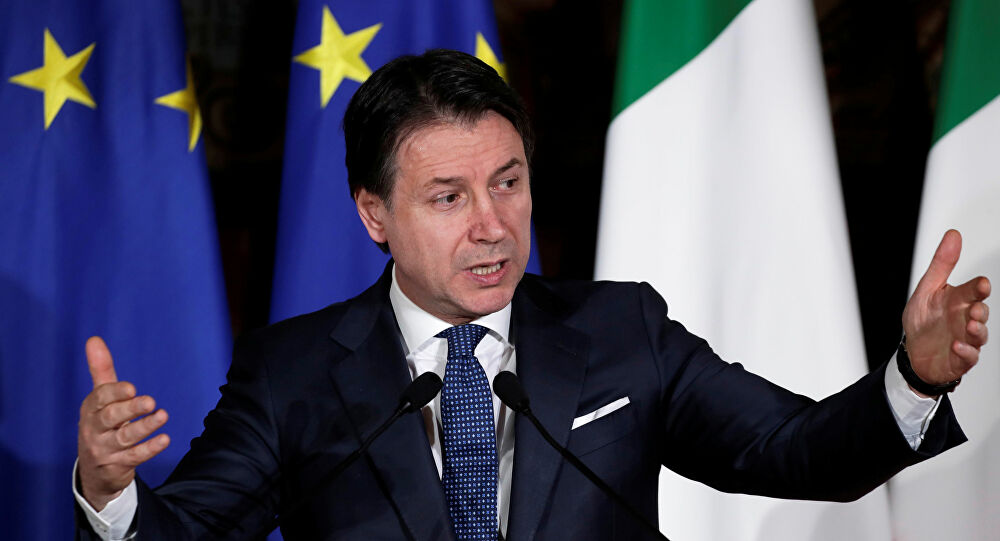The Italian government announced Saturday that it will throw open its borders next month, effectively ending Europe’s longest and strictest coronavirus lockdown just as the summer tourism season gets under way.

Both regional and international borders will open June 3, with the government eliminating a 14-day quarantine for anyone arriving from abroad. Many hope the move will revive a decimated tourist industry, which is worth 13% of Italy’s gross domestic product.
Italy is taking a “calculated risk” as it moves to further ease its coronavirus lockdown measures, PM Giuseppe Conte has said.
He said “the contagion curve” could rise again, but the country could not afford to wait for a vaccine.
Mr Conte announced that travel to and from Italy, and between the country’s regions would be allowed from 3 June.
Gyms, swimming pools and sports centres will reopen on 25 May, and cinemas and theatres on 15 June.
Travellers from EU countries will be able to enter Italy without going into a two-week quarantine.
The announced measures are a major step in the country’s efforts to restart its economy after more than two months of lockdown.
Italian officials say 31,763 people have now died with the virus in the country, the third highest figure behind the US and UK.
It was the first country in Europe to impose nationwide restrictions when coronavirus cases began to surface in northern regions in February.
But it began to relax those measures earlier this month, when it allowed factories and parks to reopen on 4 May.
What did PM Conte say?
“We’re facing a calculated risk in the knowledge that the contagion curve may rise again,” Mr Conte said in a televised address late on Saturday.
“We have to accept it otherwise we will never be able to start up again.”
The prime minister said Italy’s businesses could not afford to wait until a vaccine was found, because “we would end up with a strongly damaged economic and social structure”.
Some Italian regions had called for a swifter easing of restrictions, but the prime minister said they would be relaxed gradually to avoid a second wave of cases.
Shops and restaurants are also due to reopen from 18 May providing social distancing is enforced.
Catholic churches are preparing for the resumption of Mass on the same day, but there will be strict social distancing and worshippers must wear face masks. Other faiths will also be allowed to hold religious services.
Mr Conte’s announcement came shortly after the country, which was once the global epicentre of the pandemic, reported a further decline in its daily death toll.
It reported more than 900 deaths on 27 March, but the authorities said there were 153 in the past 24 hours.
Earlier this week, the government approved a €55bn (£48bn; $59bn) stimulus package designed to offset the economic impact of the pandemic on businesses and families.
Such an opening is exactly what tourism operators have been waiting for — even if European neighbors so far appeared be wary of the unilateral Italian announcement.
Germany — whose border is about a 4-hour drive from Venice through Austria — is instructing citizens not to travel abroad for tourism until at least June 15. And officials in neighboring France made clear that they had sought a coordinated European effort on border openings, indicating Italy had jumped the gun.
During a visit to a Normandy beach, Interior Minister Christophe Castaner said on Saturday that European countries should work together in solidarity and held out the possibility of France acting to protect its citizens.Get the Travel newsletter in your inbox.
Italy’s national hotel federation said that by April the sector had already shed 106,000 jobs, with occupancy dropping by 99% for foreigners and 96% for Italians. Another half a million jobs are at risk if the summer season does not take off, according to the association.
Judged by last year’s turnover, the virus lockdown and suspension of touristic activities cost the country 10 billion euros ($10.8 billion), the amount spent by foreigners in Italy from March to May 2019, according to a study by the national statistics agency ISTAT.
To illustrate the importance of arrivals from nearby countries, Eurostat figures show that French overnight stays in Italy hit 14 million last year, while those from Germany came in at 13.6 million, edging Italians themselves at 13.5 million. Spaniards were the top with 14.6 million.
Italy is hoping also to encourage domestic tourism, offering vouchers to lower income families to spend in Italian hotels, campgrounds and other establishments before the end of the year.
Not everyone is satisfied with the guidelines set out overnight by the government, which foresees the opening Monday of bars, restaurants, shops, hairdressers and beauticians.
Restaurant owners in Milan protested in front of the main train station Saturday, saying that the rules remain unclear and that the entire sector needs more concrete help, including an abolition of taxes. Many worry they will reopen only to have to close again because of lack of business.
And the head of the hotel federation in Florence said Saturday that mask requirements in open spaces seemed redundant if keeping a physical distance.
